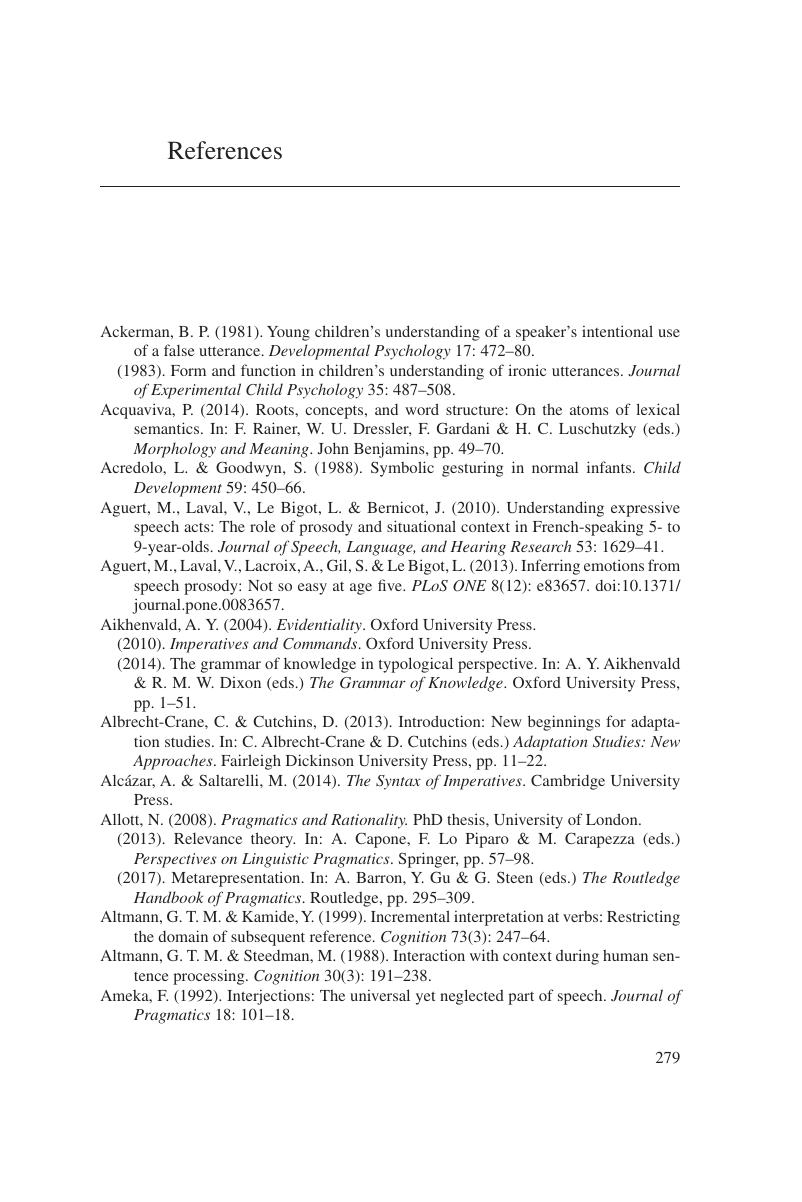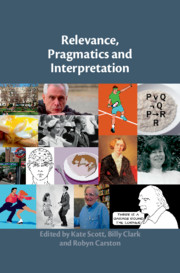Book contents
- Relevance, Pragmatics and Interpretation
- Relevance, Pragmatics and InterpretationEssays in Honour of Deirdre Wilson
- Copyright page
- Contents
- Contributors
- Cover Acknowledgements
- Introduction
- Reflections on the Development of Relevance Theory
- Part I Relevance Theory and Cognitive Communicative Issues
- Part II Pragmatics and Linguistic Issues
- Part III Figurative Language and Layered Interpretations
- References
- Author Index
- Subject Index
- References
References
Published online by Cambridge University Press: 08 July 2019
- Relevance, Pragmatics and Interpretation
- Relevance, Pragmatics and InterpretationEssays in Honour of Deirdre Wilson
- Copyright page
- Contents
- Contributors
- Cover Acknowledgements
- Introduction
- Reflections on the Development of Relevance Theory
- Part I Relevance Theory and Cognitive Communicative Issues
- Part II Pragmatics and Linguistic Issues
- Part III Figurative Language and Layered Interpretations
- References
- Author Index
- Subject Index
- References
Summary

- Type
- Chapter
- Information
- Relevance, Pragmatics and Interpretation , pp. 279 - 312Publisher: Cambridge University PressPrint publication year: 2019



